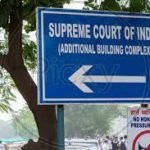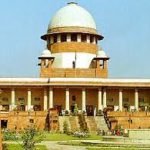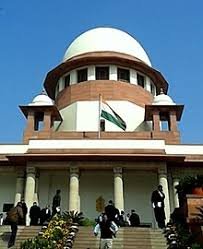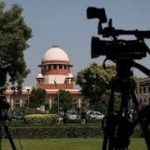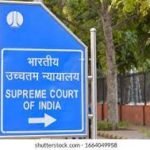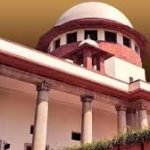Supreme Court of India judgment, discusses the fundamental importance of truth in the judicial system, emphasizing that courts are tasked with uncovering it. It then examines India’s juvenile justice legislation, highlighting the evolution from the 1986 Act to the more comprehensive 2000 and 2015 Acts, which aim for the reformation and rehabilitation of child offenders, treating them as victims. Crucially, the document asserts that a claim of juvenility can be raised at any stage, even after a case’s final disposal, and that courts have a mandatory duty to determine age according to the specified procedures, overriding procedural hurdles and even previous rulings if the plea was not properly adjudicated. The principle of actus curiae neminemgravabit is invoked to rectify judicial errors that prejudiced a party, and the limited nature of judicial review over presidential pardon orders is also addressed, clarifying that such review is distinct from a court’s duty to address a juvenility claim. The factual matrix of a specific case involving a death sentence, where the accused’s age was consistently overlooked, is presented to illustrate the application of these principles, leading to the decision that the appellant, who was a minor at the time of the offense, should be released and receive support for reintegration.
(A) Juvenile Justice (Care and Protection of Children) Act, 2015, Section 94(2) – Juvenile Justice (Care and Protection of Children) Rules, 2007, Rule 12 – Juvenile – Age determination – Plea of juvenility – Appellant despite being illiterate, raised this plea one way or another, right from the trial Court up to the conclusion of the Curative Petition before this Court – Procedural mandate contemplated both the 2000 and the 2015 Acts was also not followed by the trial Court and the High Court – Before this Court, the Appellant had relied upon the school certificate in the Criminal Appeal – It was once again relied upon in the Review Petition – Thereafter, additional documents were relied upon by the Appellant in the Writ Petition and also in the Curative Petition which was subsequently filed – In the Curative Petition, a counter affidavit was filed by the State certifying the documents furnished by the Appellant to be true – Nonetheless, the said petition was dismissed without according any reason – When the plea of juvenility was raised, it should have been dealt with under the existing laws at the relevant point of time, especially when there exists a tacit and clear admission as to the age of the Appellant – In the subsequent Writ Petition filed before the High Court, two different prayers had been made, namely, the determination of the Appellant’s plea of juvenility and consequent release, or alternatively, judicial review of the decision of the President or the Governor and consequent release – As the Executive cannot be construed to have undertaken an adjudication on the determination of the age of the accused, and with the first prayer being a distinct one invoking Section 9(2) of the 2015 Act, the High Court has committed an error in its reasoning – Held that this is a case where the Appellant has been suffering due to the error committed by the Courts – He lost an opportunity to reintegrate into the society. The time which he has lost, for no fault of his, can never be restored – Sentence imposed in excess of the upper limit prescribed under the relevant Act liable to be set aside, while maintaining the conviction rendered – It cannot be construed that the Presidential Order is interfered with, as the issue is the failure of the Court in not applying the mandatory provisions of the 2015 Act with specific reference to the plea of juvenility – Therefore, it is not a review of the Presidential Order, but a case of giving the benefit of the provisions of the 2015 Act to a deserving person – Appellant has undergone imprisonment for almost 25 years, during which time, the society has undergone significant transformation which the Appellant might be unaware of and find difficult to adjust with – Uttarakhand State Legal Services Authority directed to play a proactive role in identifying any welfare scheme of the State/Central Government, facilitating the Appellant’s rehabilitation and smooth reintegration into the society upon his release, with particular emphasis on his right to livelihood, shelter and sustenance guaranteed under Article 21 of the Constitution.
(Para 45 to 54)
(B) Juvenile Justice (Care and Protection of Children) Act, 2015, Section 9(2) – Juvenile – Plea of juvenility – Words “even after the final disposal of the case” – Merely because a casual adjudication has taken place, it does not mean that a plea of juvenility cannot be raised subsequently – This is for the simple reason that the plea of juvenility has not attained finality – So long as the right of a party subsists, one can never say that finality has been attained – In a case where a plea has been raised, but not adjudicated upon, the decision rendered thereunder would not amount to attaining finality – Likewise, when such a plea is not treated as one under Section 9(2) of the 2015 Act in compliance with the procedural mandate specified thereunder, an order rejecting such a plea would not be termed as a final one – To put it differently, even assuming a plea of juvenility was raised but not considered appropriately at the time of disposal of a Special Leave Petition/Statutory Criminal Appeal, a Review Petition, or a Curative Petition thereafter, it would not bar a competent Court from deciding the said issue by following due procedure – If an adjudication is based on due determination, then there may not be any room for another round of litigation – But, in a case where the plea was not treated as an application under Section 9(2) of the 2015 Act and, the procedure mandated thereunder was not followed, the principle as aforesaid would certainly apply as the right of raising the plea of juvenility has not ceased and, therefore, subsists.
(Para 22)
Om Prakash @ Israel @ Raju @ Raju Das V. Union Of India
Supreme Court: 2025 INSC 43: (DoJ 08-01-2025)

